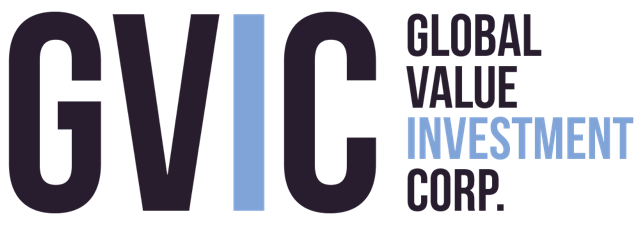Notes from the Research Desk
In this note we continue our discussion of capital allocation. To further the discussion, we give examples of capital allocation priorities observed in our portfolio companies and discuss our research team’s view on those allocation decisions.
As we outlined in our last note, capital can be allocated in one of the following six ways:
- Dividend distribution to stockholders,
- Stock buybacks through open-market purchases or tender offers
- Reinvestment in the company through capital expenditures (“Cap Ex”),
- Invest in other businesses through a merge or acquisition (”M&A”),
- Debt reduction through bond buybacks or debt retirement, or
- Continue to accumulate cash on the balance sheet.
Each of our portfolio companies employs a capital allocation strategy that is unique, and the range of strategies exemplify the variety of options that are available to management teams. For example, Himalaya Shipping, Ltd. (HSHIP-OSL) (“Himalaya Shipping”) spent $830 million in a two-year span to buy twelve bulk cargo vessels that are set to be delivered between 2023 and 2024. After its initial investment, Himalaya Shipping doesn’t anticipate purchasing additional assets and will operate its twelve vessels with the minimal necessary maintenance Cap Ex until the vessels are scrapped. Once the vessels hit the water and are revenue earning, the company will pay quarterly dividends to shareholders based upon a fixed percent of its net income.
Fluent, Inc. (FLNT) (“Fluent”) is a portfolio company that goes about allocating its capital differently. Fluent is a performance-based digital marketing company that requires continuous investment into the research and development of its products and platforms to keep up with ever-changing consumer trends and changes in web-based marketing platforms and regulations. It is often hard to categorize whether Fluent’s Cap Ex is growth or maintenance, but either way it is necessary for the company to consistently invest in improving its assets. Contrary to Himalaya Shipping, Fluent does not pay a dividend and reinvests the majority of its free cash back into the business while incrementally repaying its long-term debt. The company also pursues a moderately aggressive M&A strategy with its free cash. In the past five years, Fluent has acquired three new companies as either a subsidiary or integrated as a division of Fluent with purchase prices that range from $0.971 million to $7.264 million.
We view both Himalaya Shipping’s and Fluent’s capital structure and allocation priorities as sensible for each company. The seaborn shipping industry, and bulk-cargo charter rates, is highly cyclical, and it is very difficult to time the peaks and valleys of each cycle. Accordingly, we have observed that there is historical justification for a vessel owner to purchase ships somewhere in a downcycle (understanding that you can’t perfectly buy at the bottom) with moderate-to-high leverage and then operate the ships through multiple cycles and pay out dividends to shareholders when there is adequate cash generation. The debt holders bear some risk of default during downcycles but typically have their notes secured by the real assets (typically the vessels) and could see a paydown of debt balances in particularly strong charter rate environments.
Similarly, we believe Fluent’s capital allocation priorities are prudent given its need to continually adjust to consumer demands and update its IT infrastructure. A lack of reinvestment in the business would, over time, result in subpar products compared to its competitors and a decline in its ability to generate revenue. We also believe it is important for Fluent to pay down its long-term debt so that it reduces its interest expense and frees up more cash to be reinvested in its products, platforms, and opportunities for acquisitions. Further, a reduction of debt could make Fluent a more attractive candidate for acquisition by another company or private equity fund. Continuing with acquisitions, we believe Fluent’s M&A strategy aligns with its overall strategic objectives and allows it to expand into new verticals, channels, and geographies in an expedited fashion compared to organic development. Management has stated that it tracks acquisition performance over a three or five-year period following the transaction dependent on the expected timeline for integration. It remains to be seen if Fluent’s recent acquisitions will meet the company’s self-prescribed hurdle rate (or MIAM’s baseline equity return rate of 15%) and deliver financial returns. However, our team agrees with the decision to allocate some amount of the company’s free cash towards acquisitive growth.
One capital allocation tool that we routinely view negatively is the repurchase of common stock. First, we concede that company management has the benefit of seeing all internal metrics and projections prior to making any purchases or sales of its equity securities. This is the ultimate information advantage and one that most investors would pay dearly for if market regulations weren’t in place. In theory, company management should have the upper hand on market participants. However, even with nearly perfect data, successful timing of the market remains elusive for company management in the same way it does for many investment advisors. We mentioned in the last note the benefits of buying back stock, but those benefits rarely outweigh the loss created by mismanagement or timing of stock repurchase plans. As always, we remain observant and flexible in our thinking and would be pleased to see management teams effectively use this powerful capital allocation tool. For now, we remain skeptical of any stock repurchase plans and believe that the capital can likely be allocated to avenues with more potential for long-term value creation.
It is important to restate that each company’s capital allocation strategy must be reviewed on a case-by-case basis and reconsidered over time in light of the company’s current and expected circumstances. Hopefully our two examples give you a flavor of how we view our portfolio companies’ allocation decisions. Assessment of management’s ability to allocate capital is a critical portion of our review process and we’re hesitant to give away all of the details of how the sausage is made at MIAM. That said, if you are an existing or prospective client and have questions, please reach out to MIAM and our research team will gladly discuss any particular company or idea in a one-on-one call.
We hope your year is off to a good start and look forward to connecting with you soon to discuss our research process and portfolio companies in more detail.
Sincerely,
The MIAM Research Team

